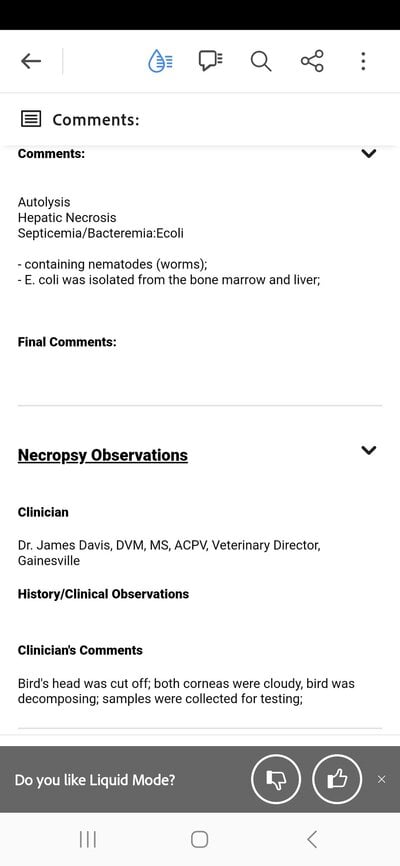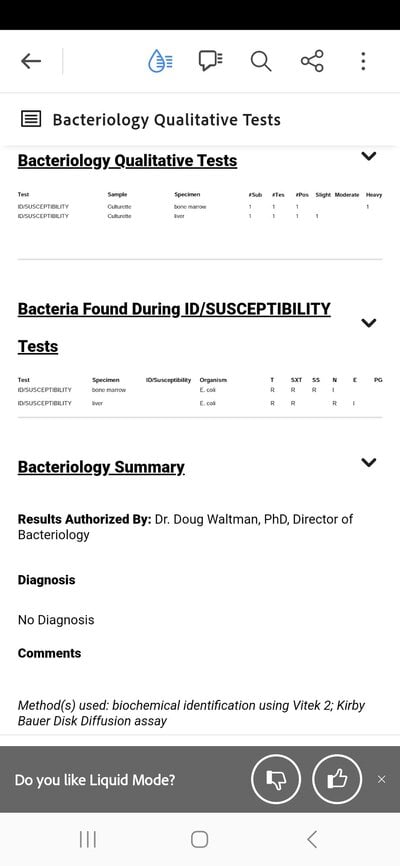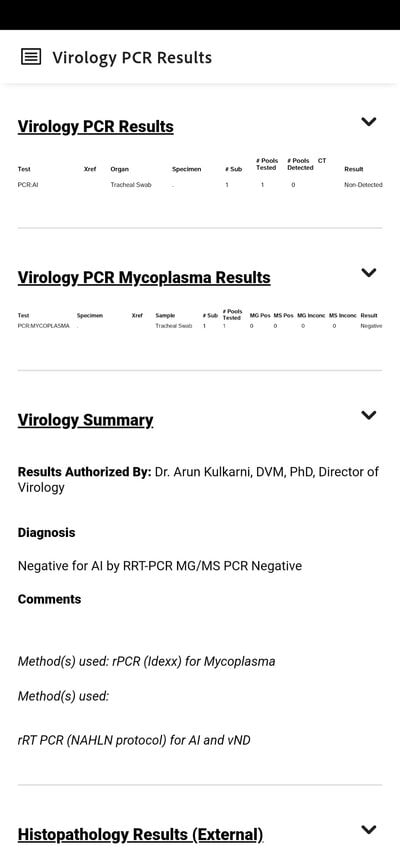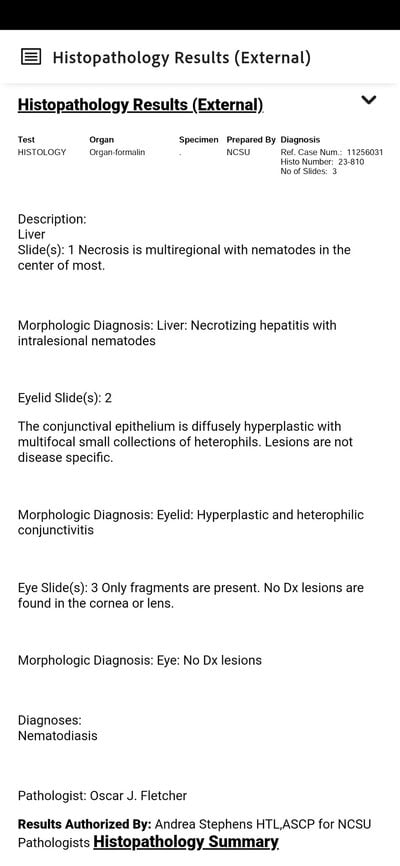ackie
previously jwehl // dogs & cats & squirrels oh my!
I just got necropsy results back from my peachick that was failing to thrive. I've attached the full report but the overall result is:
The technician suggested a broad-spectrum wormer for the rest of the flock. He deals primarily with chickens so I figured I'd follow up here for specifics on which wormer and what quantities I should use, and if yall thought I should do anything else in light of the results.
No one else in the flock is showing any issues so no other symptoms to report.
Notes:
The bird was shipped and I guess insulated less effectively than I thought which is the listed decomposition.
Autolysis
Hepatic Necrosis
Septicemia/Bacteremia:Ecoli
- containing nematodes (worms)
- E. coli was isolated from the bone marrow and liver;
The technician suggested a broad-spectrum wormer for the rest of the flock. He deals primarily with chickens so I figured I'd follow up here for specifics on which wormer and what quantities I should use, and if yall thought I should do anything else in light of the results.
No one else in the flock is showing any issues so no other symptoms to report.
Notes:
The bird was shipped and I guess insulated less effectively than I thought which is the listed decomposition.
Last edited:









 Will your birds eat a mash? If so you could de-worm them in their feed.
Will your birds eat a mash? If so you could de-worm them in their feed.